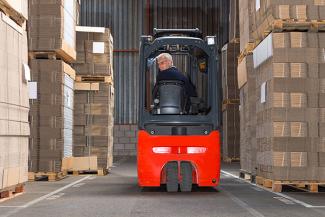How to Ship Freight: Equipment Types and Services
What types of transportation equipment are available?
No matter what industry you’re in, getting products to your customers on-time and in good condition is vital to your business’ success.
Benefits of an Efficient Reverse Logistics Process
Optimizing your company’s reverse logistics system
What happens to your products after the point of sale? Are they easily returned if they’re faulty, recyclable if they’ve reached end-of-life, or able to be repaired? If the answer to these questions isn’t known, or the process to make those events happen isn’t well-defined, your reverse logistics system may not be operating at peak efficiency. Take a look at the benefits of an optimized approach, and get tips for improving your processes.
Technology and Its Impact on Freight Shipping
The importance of evolving technology
According to a June Forrester Report, business-to-business (B2B) e-commerce is expected to reach $1.2 trillion and account for 13.1 percent of all B2B sales by 2021. In the pre- and early-internet days, most would have never imagined these kinds of numbers.
Retail Logistics: Preparing for the Holidays
How holiday shopping affects retail supply chain
With a combined consumer spend of over $650 billion in November and December 2016 alone, it’s no surprise that many companies focus on plans to meet the demands of holiday shoppers year-round. The ten busiest shopping days of the year fall in the fourth quarter, which means the work to ensure shelves are stocked has to happen well in advance of the holiday shopping season.
Ground Shipping Options
What is ground freight shipping?
Ground shipping is an economical way to move freight across the country — either over the road or by rail. It’s also a mode of transportation used with international shipments, where trucks are used to move freight to and from airports and ocean ports. Ground offers competitive advantages including lower rates and more flexibility — with the capacity to move everything from standard palletized shipments to large freight and temperature-sensitive goods.
Green Transportation Initiatives for a Sustainable Supply Chain
Sustainable transportation insight and eco-friendly initiatives
When you combine increasing concerns about environmental preservation with the challenges companies face attempting to conserve costs, green transportation and sustainable mobility become relevant topics. Because trucks alone account for 57 percent of global freight emissions, transportation and logistics service providers are tasked with minimizing their ecological impact — while also maintaining economical business practices.








